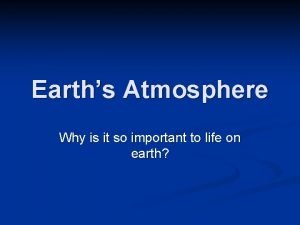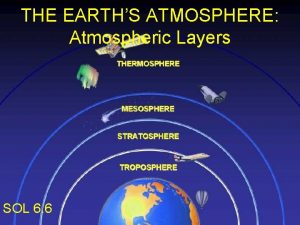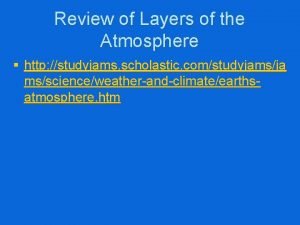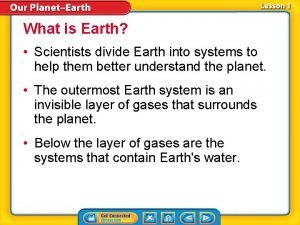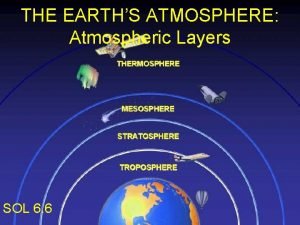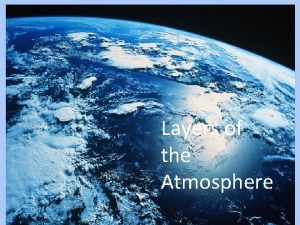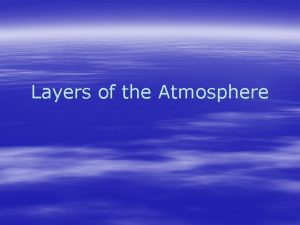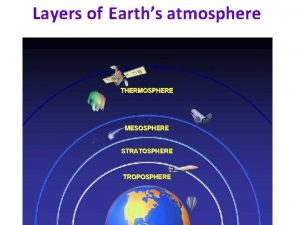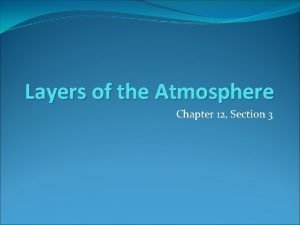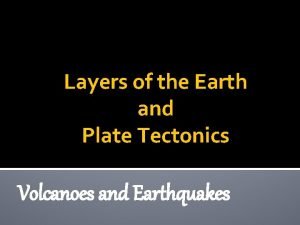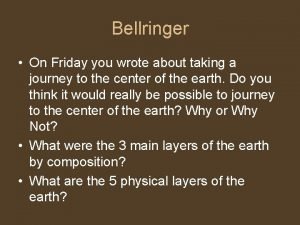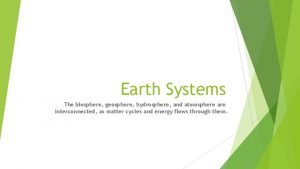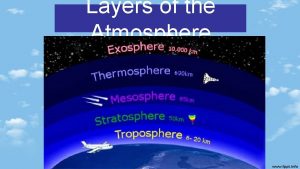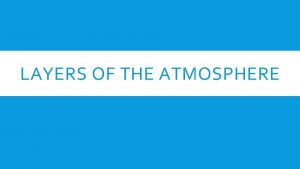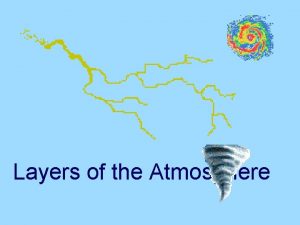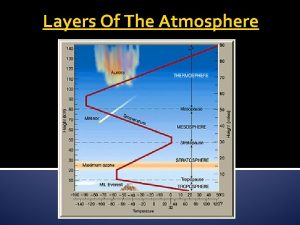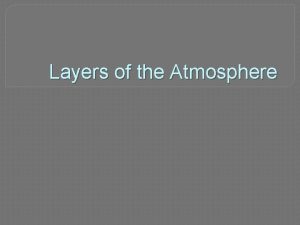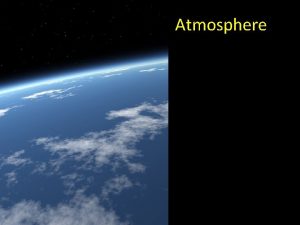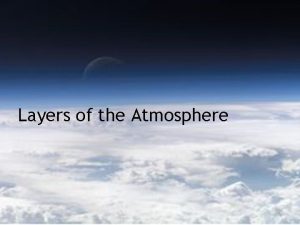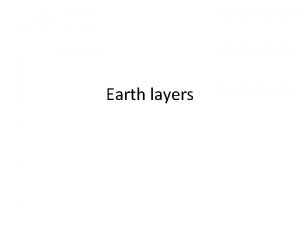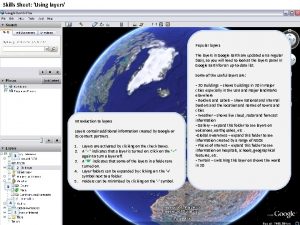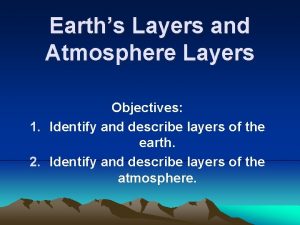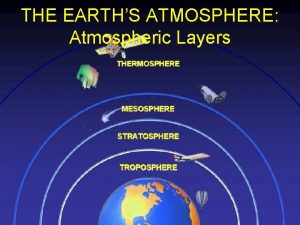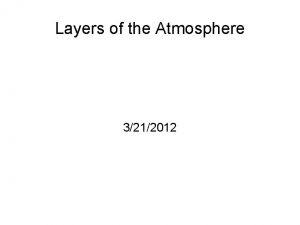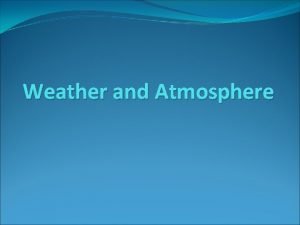Announcements your Atmosphere Layers Graphing activity and Heat




































- Slides: 36

Announcements: your Atmosphere Layers Graphing activity and Heat Transfer brochure were due yesterday. Quiz on Air Masses and fronts Tomorrow Extra help offered next Wednesday until 5: 00 PM https: //www. youtube. com/watch ? v=LD 4 h. SW 2 mys 0&index=9&list=PL 6 B 82 CA 6 C 8466 C 529 Weather Fronts Song Mr. Parr 1 st Sharpen Pencils and gather Supplies What I need today: Notes on Fronts, Annotated Air Masses and Fronts Article (given Tuesday ) , Forecasting the Weather Worksheet and blank maps (given yesterday) 2 nd Write down your learning target and new vocabulary • Humidity • Wind • Temperature • Air pressure • Visibility (cloud cover I can Use what I have learned about air masses and fronts to explain today’s weather conditions in Dallas, GA.

* I can use what I have learned about air masses and fronts to explain today’s weather conditions in Dallas, GA. Crosscutting Concepts Patterns Engineering Practices Analyzing and Interpreting Data Vocabulary Agenda Learning Target Opening • Review fronts • Weather Conditions for Dallas, GA https: //weather. com/weather/today/l/USGA 0656: 1: US https: //weather. com/maps/currentusweath er Work Session 1 st complete Forecasting the weather Activity (in pairs) 2 nd write an extended forecast ( Five day forecast) Or 2 nd Correct and turn in your Layers of the atmosphere and heat transfer Quiz • Closing Present your forecast • • • Humidity Wind Temperature Air pressure Visibility (cloud cover)

* I can use what I have learned about air masses and fronts to explain today’s weather conditions in Dallas, GA. Crosscutting Concepts Patterns Engineering Practices Analyzing and Interpreting Data Vocabulary Agenda Learning Target Opening • Review fronts • Weather Conditions for Dallas, GA https: //weather. com/weather/today/l/USGA 0656: 1: US https: //weather. com/maps/currentusweath er Work Session 1 st complete Forecasting the weather Activity (in pairs) 2 nd write an extended forecast ( Five day forecast) Or 2 nd Correct and turn in your Layers of the atmosphere and heat transfer Quiz • Closing Present your forecast • • • Humidity Wind Temperature Air pressure Visibility (cloud cover)


A cold front is a boundary between a fast moving cold, ___ dry air mass, and a ____ moist air mass. ______ slower moving warm, _____ This causes the warm, moist air to rise rapidly _____ and condense quickly into clouds.

If the temperature difference between the cold and warm air is large, thunderstorms ______ and even tornadoes ____ may develop.

This is the symbol meteorologists use to indicate a cold front on a map.

Can you find a cold front on this map? (Which direction is it moving? )

A warm front is a warm air mass of _____ that rises up over and replaces a mass cold air. of ____

As the warm, less dense _____ air moves up and over the cooler air, moisture in the warm air begins to condense and form ______. clouds ______ Precipitation is likely.

This is the symbol meteorologists use to indicate a warm front on a map.

Can you find a warm front on this map? (Which directions is it moving? )

A stationary front is a boundary between a warm, moist air mass and a cold, dry air moving mass, neither of which are ______. The place air masses remain in the same _____ for an extended period of time.

This is the symbol meteorologists use to indicate a stationary front on a map. COLD AIR WARM AIR

The weather associated with a stationary front is often ______ several days of cloudy skies with ____ scattered showers.

Can you find the stationary front on this map?

Sometimes a cold front is following behind a warm front traveling in ______ same direction. The approximately the _____ catches up cold front moves faster and “_______ with” and “overtakes” the warm front.

After the cold front overtakes the warm cooler air that front, it meets with the ______ was ahead of the warm front. The warm pushed upbetween the two moist air is _____ cooler air masses. This is called an ____ occluded front.

With the lifting of the warm, moist air, clouds form and ______ precipitation is possible.

This is the symbol meteorologists use to indicate an occluded front on a map. The occluded front ends at a low pressure area and the other end connects to cold and warm fronts.

Can you find the occluded front on this map?

Identify the following front. Warm Front

Identify the following front. Cold Front

Identify the following front. Occluded Front

Identify the following front. Stationary Front

According to this map, what kind of weather will Atlanta, Georgia be experiencing soon? What kind of front will produce this type of weather? A stationary front could cause rain showers soon.

According to this map, how will the weather be different in St. Louis, Missouri, tomorrow? A cold front is approaching from the north so the temperature should be cooler tomorrow.

RESOURCES http: //www. kidsgeo. com/geography-for-kids/0129 -stationary-fronts. php http: //commons. wikimedia. org/wiki/File: Stationary_front_symbol. svg http: //fox 43. com/2013/04/10/small-severe-weather-chance-today/#axzz 2 Q 5 m. GDAsx http: //www. edupic. net/weather_gr. htm http: //en. wikipedia. org/wiki/Warm_front http: //www. physicalgeography. net/fundamentals/7 r. html http: //www. hpc. ncep. noaa. gov/html/fntcodes 2. shtml http: //weather. about. com/od/imagegallery/ig/Weather-Map-Symbols/Warm. Fronts. htm http: //pages. bangor. ac. uk/~oss 006/meteorology/frontsalevel. html http: //www. verticalfrontiers. com/knowledge/cloud-spotting-weatherfronts/occludedfront 2/ http: //kidlat. pagasa. dost. gov. ph/genmet/fronts/occludedfront_b. gif http: //blog. silive. com/weather/2009/06/the_weekend_weather_95. html http: //4. bp. blogspot. com/_57 j. Rg. Dt 4 zro/TU 7 n. UDEMe. HI/AAAAB 4 k/Tpl. Pz. Ikb. Wto/s 1600/Weather+Forcast+for+May+2+2010. gif

* Identify the types of clouds associated with each type of weather front. Opening • Quiz on Air Masses and Fronts Work Session Crosscutting Concepts Patterns Engineering Practices Analyzing and Interpreting Data Vocabulary Agenda Learning Target 1 st complete Forecasting the weather Activity and turn in Air Masses and Fronts Article 2 nd Types of Clouds Article • • Read and Annotate Complete Questions • • • Stratus Cumulonimbus Cirrus Nimbus

Announcements: We Have a Sub Today Turn in your Air Masses and Fronts Annotated Article with questions before you leave Atmosphere Layers Graphing activity and Heat Transfer brochure were due Wednesday. Extra help will not be offered next Wednesday due to Early Release https: //www. youtube. com/watch ? v=LD 4 h. SW 2 mys 0&index=9&list=PL 6 B 82 CA 6 C 8466 C 529 Weather Fronts Song Mr. Parr 1 st Sharpen Pencils and gather Supplies What I need today: Annotated Air Masses and Fronts Article (given Tuesday ) , Forecasting the Weather Worksheet and blank maps (given yesterday), Types of Clouds Article and Compare and Draw the Fronts/Contrast Warm and Cold Fronts (given today) 2 nd Write down your learning target and new vocabulary • Stratus • Cumulonimbus • Cirrus • Nimbus Today’s Learning Target: Identify the types of clouds associated with each type of weather front.



Announcements: Turn in your Air Masses and Fronts Annotated Article with questions before you leave Atmosphere Layers Graphing activity and Heat Transfer brochure were due Wednesday. Extra help will not be offered next Wednesday due to Early Release https: //www. youtube. com/watch ? v=LD 4 h. SW 2 mys 0&index=9&list=PL 6 B 82 CA 6 C 8466 C 529 Weather Fronts Song Mr. Parr 1 st Sharpen Pencils and gather Supplies What I need today: Types of Clouds Article and Compare and Draw the Fronts/Contrast Warm and Cold Fronts (given Friday), Quiz on Air Masses and Fronts (returned today) 2 nd Write down your learning target and new vocabulary (we are reviewing these terms) • Cold Front • Warm Front • Occluded Front • Stationary Front Today’s Learning Target: Identify the types of clouds associated with each type of weather front.

* Identify the types of clouds associated with each type of weather front. Opening • Review Quiz on Air Masses and Fronts Work Session 1 st Finish Types of Clouds Article Crosscutting Concepts Patterns Engineering Practices Analyzing and Interpreting Data Vocabulary Agenda Learning Target • • Read and Annotate Complete Questions Draw Each Front Compare and Contrast the Types of Clouds Associated with Cold Fronts and Warm Fronts • • Cold Front Warm Front Occluded Front Stationary Front

* Diagram must include: • • • Warm air Cold air Types of clouds drawn (types of clouds do not have to be identified) • • Direction of the air masses Symbols associated with each front

Compare and contrast the types of Clouds associated with cold fronts and Warm fronts ( you may draw a diagram but you must explain it to receive full credit)
 Atmosphere layer
Atmosphere layer Layers of the atmosphere song
Layers of the atmosphere song Study jams conductors and insulators
Study jams conductors and insulators Scientists divide the atmosphere into how many layers?
Scientists divide the atmosphere into how many layers? Layers of the atmosphere definitions
Layers of the atmosphere definitions Layers of the atmosphere song
Layers of the atmosphere song Troposphere, stratosphere, mesosphere, thermosphere
Troposphere, stratosphere, mesosphere, thermosphere Why do scientists divide the atmosphere into layers
Why do scientists divide the atmosphere into layers Layers of the atmosphere
Layers of the atmosphere The four main layers of the atmosphere
The four main layers of the atmosphere Pvu background
Pvu background /r/announcements
/r/announcements Church announcements
Church announcements Seashell cs136
Seashell cs136 Potentiial
Potentiial General announcements
General announcements Thermocline graphing activity
Thermocline graphing activity Range of tolerance graphing activity
Range of tolerance graphing activity Analogy of earth
Analogy of earth Latent heat definition
Latent heat definition Debye huckel limiting law
Debye huckel limiting law Give us your hungry your tired your poor
Give us your hungry your tired your poor Plate boundaries song
Plate boundaries song Throw your hands up for the layers of the earth
Throw your hands up for the layers of the earth Specific heat capacity table pdf
Specific heat capacity table pdf Moist heat cooking examples
Moist heat cooking examples Activity 2 limiting reactants activity
Activity 2 limiting reactants activity What is aoa in project management
What is aoa in project management Activity 1 introductory activity
Activity 1 introductory activity Activity 1 activity 2
Activity 1 activity 2 Activity 3 a lot of square
Activity 3 a lot of square 1index
1index Look at activity 1 and answer
Look at activity 1 and answer Differentiate ideal self and real self
Differentiate ideal self and real self How does biosphere interact with hydrosphere
How does biosphere interact with hydrosphere Geosphere to biosphere
Geosphere to biosphere Atmosphere
Atmosphere
